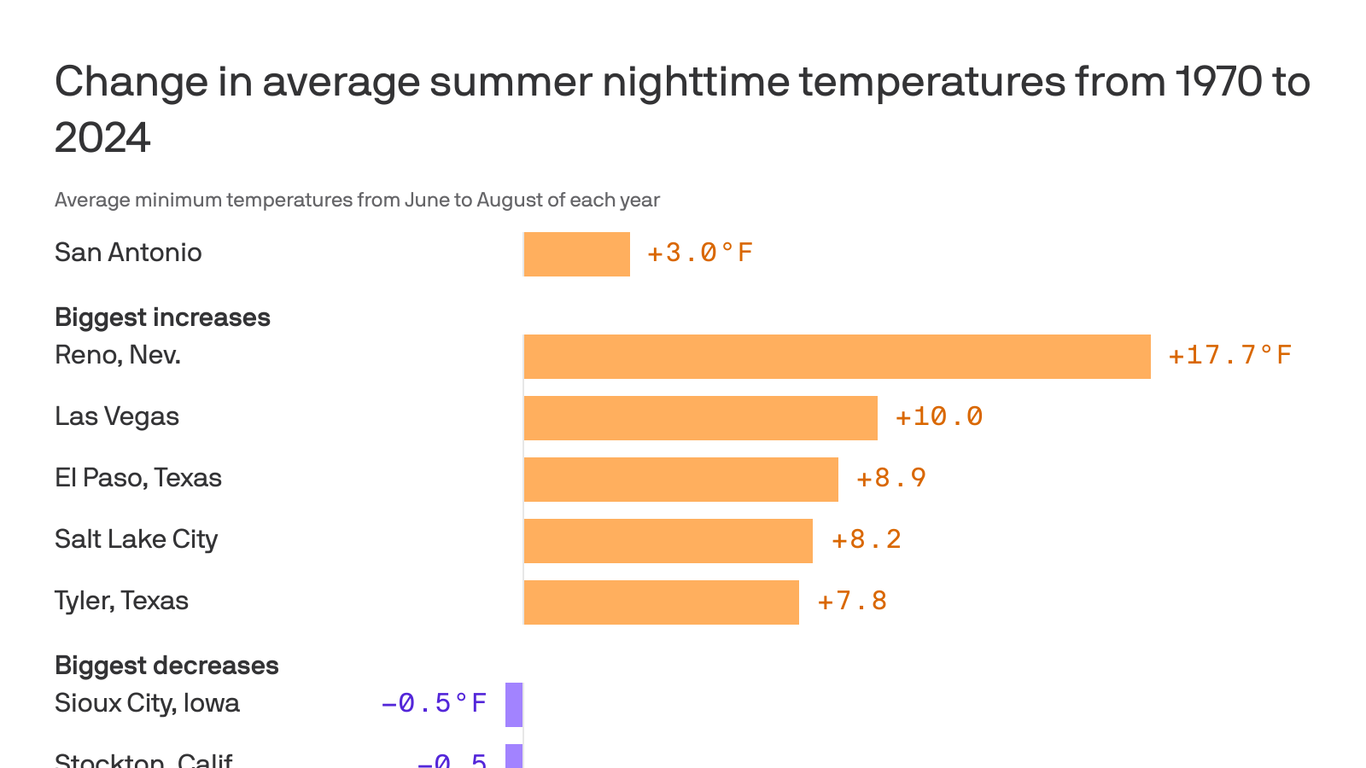The continent is warming at nearly twice the global average rate, intensifying extreme weather events that are “exacting an unacceptably high toll” in the region, according to the World Meteorological Organization.
—
Asia continued to warm rapidly in 2024, the hottest or second-hottest year on record for the continent depending on the dataset, according to a new study.
The new State of the Climate in Asia report, a joint effort by the World Meteorological Organization (WMO) and other regional and international organizations, highlighted significant changes in key climate indicators like land and sea temperatures, glacier mass and sea levels.
WMO Secretary-General Celeste Saulo said these changes will have major repercussions for societies, economies and ecosystems, adding that extreme weather is “already exacting an unacceptably high toll” in the region.
Heat
Asia is warming at nearly twice the global average rate, with the warming trend in the past 23 years almost double that during the 1961–1990 period, according to the report. In 2024, prolonged heatwaves affected most of the continent, with temperatures 1.04C above the 1991–2020 average.
Saudi Arabia experienced an extreme heatwave in mid-June, coinciding with the Hajj pilgrimage season in Mecca, leaving at least 1,301 pilgrims dead.
Temperatures rose dramatically between April and May across southeast Asia, affecting Cambodia, Laos, Vietnam, and the Philippines. Thailand, where daily temperature records for that time of year were broken multiple times, recorded 38 heat-related deaths during that period.
In India, 112 people died from extreme heat during an intense heatwave in May, during which temperatures surpassed 50C.
In the East, Japan had its hottest July, hottest summer and hottest autumn on record. China and South Korea also recorded multiple daily temperature records last summer.
Extreme heat is extremely dangerous for humans as it compromises physiological processes meant to keep the body cool, heightening the risk of heatstroke and other heat-related illnesses. It can be life-threatening if not promptly treated.
Heatwaves kill nearly half a million people each year globally, making them the deadliest extreme weather event. Like other extreme weather events such as floods and droughts, heatwaves have been made more frequent and intense by climate change, which is primarily a consequence of fossil fuel burning.
Sea-surface temperatures across Asia were the highest on record last year, as most of the ocean area in the region was affected by marine heatwaves of strong, severe, or extreme intensity – the largest extent since records began in 1993, WMO said.
Ocean warming is increasing sea levels, putting coastal communities at risk. On the Pacific and Indian Ocean sides of Asia, sea levels exceeded the global average last year, threatening low-lying coastal areas.
Extreme Weather Events
Warmer oceans are intensifying tropical cyclones and rainfall events in the region, causing large-scale destruction. The most significant event of the year was Typhoon Yagi, which wrecked havoc in the Philippines, China, Vietnam, laos, Thailand and Myanmar in early September. The death toll from the event surpassed 1,000, while hundreds of thousands of buildings were reportedly destroyed.
Extreme rainfall and flooding events brought widespread death and destruction in many eastern Asian countries, including Pakistan, which had its wettest April on record; Kazakhstan, where the rapid melting of a heavy snowpack inundated entire cities; the United Arab Emirates, which saw its heaviest rainfall event since records began in 1949; as well as Bahrain, Oman and Iran.
South Asia’s monsoon season also brought extreme rainfall events, with widespread flooding affecting Nepal, India, and Pakistan.
Off Track
The WMO underscored the urgent need for enhanced early warning systems and climate adaptation strategies to safeguard lives and livelihoods in this increasingly vulnerable region.
So far, the world has warmed by 1.3C compared to pre-industrial times, though data suggests that 20-40% of the global human population live in regions that, by the decade 2006–2015, had already experienced warming of more than 1.5C in at least one season.
According to the Intergovernmental Panel on Climate Change, every 0.5C of global warming will cause discernible increases in the frequency and severity of heat extremes, heavy rainfall events, and regional droughts.
Featured image: Moniruzzaman Sazal / Climate Visuals Countdown, via Wikimedia Commons.
You might also like: ‘Urgent and Escalating’: Climate Change Brought Unprecedented Challenges to Africa in 2024, Report Finds
This story is funded by readers like you
Our non-profit newsroom provides climate coverage free of charge and advertising. Your one-off or monthly donations play a crucial role in supporting our operations, expanding our reach, and maintaining our editorial independence.
About EO | Mission Statement | Impact & Reach | Write for us









 English (US) ·
English (US) ·